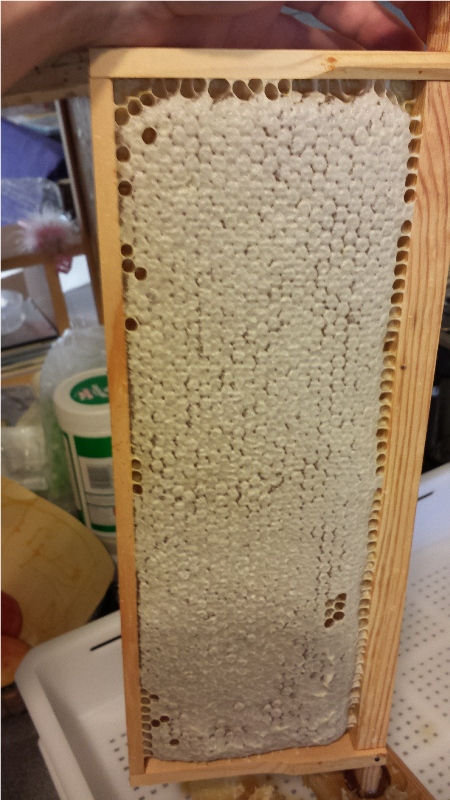During the summer the bees collect nectar, turning it into honey. They
store the honey in the beeswax comb, in the famous hexagonal shape cells.
The honey is the bees store of food for the winter. They can bring in huge
amounts of nectar, which they change into honey, allowing the excess to be removed by the beekeeper.
The nectar is placed in the hexagonal cells and left until the water
content is reduced by the heat of the hive. Once the water content is
correct (around 18%) the bees will place a beeswax capping across the mouth of the cell
preserving it's content.
Once the majority of the cells are capped the fun begins.
As to be expected, all the items used during the extraction that have
contact with the honey have to be food grade, so this means stainless
steel and food grade plastic.
As previously mentioned, the honeycomb is held in a frame which enables the
whole frame of honeycomb to be removed from the hive. To the beekeeper,
that means two sides of frame to extract the honey from.
So how is the honey removed from the hive?
Well, the bees
are protective of their honey, and so a 'one way valve' is placed
under the frames, so that the bees cannot return to the frames
once they have left. This 'valve' is left for 24hr, and then the
frames are removed from the hive, the odd bee left is carefully
brushed off.
|
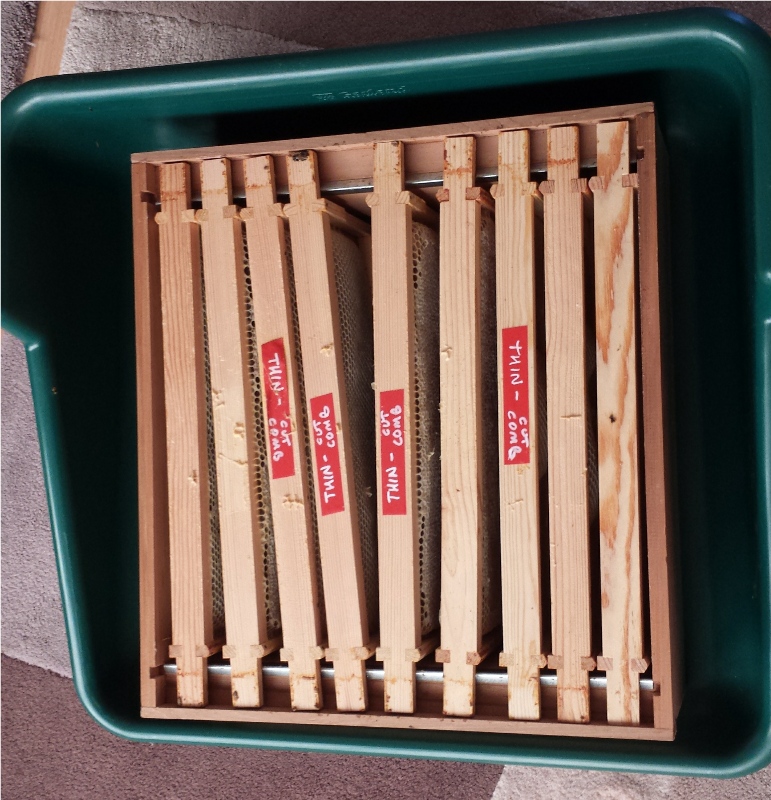 |
| The frames are placed on the uncapping
tray which can be seen in the picture. |
 |
|
Each
frame then has the capping's (covering each of the cells) removed by using
a knife to cut them off. The capping's fall into the tray, and any honey
drips into the lower tray. The wax capping's are kept as they are nearly pure
white in colour-excellent for candles. The two photos show the before and
after the frame is uncapped. |
|
Once both sides of the frame have been uncapped, four frames at a
times are placed into the honey extractor. A handle is turned that
simply rotates the frames at speed, spinning out the honey which
collects in the bottom of the extractor. The extractor is a
'tangential extractor' this means that one side of the frame is
extracted at a time, the frame is removed/turned and replaced
allowing the other side to be extracted. For smaller numbers of
hive this type of extractor is cheaper, although slightly more
labour intensive due to the extra turning of the frame.
The
photo also shows the two stage filter and the honey bucket
awaiting for the honey.br>The extractor is sitting on a custom
made wooden platform with four wheels mounted on the underside.
This allows the extractor to move/shake around a little when
spinning, the movement is due to the extractor not being balanced,
a bit like a washing machine spinning full of washing !
|
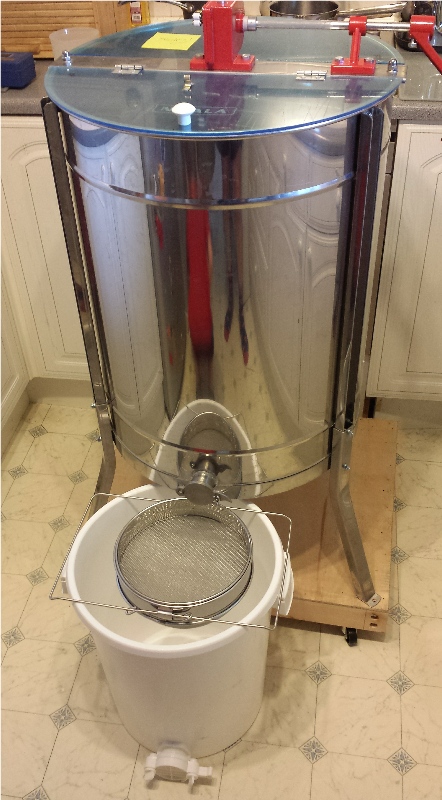 |
| Once enough honey has been collected in
the extractor, a tap located at the bottom opened allowing the
honey to flow into he awaiting bucket |
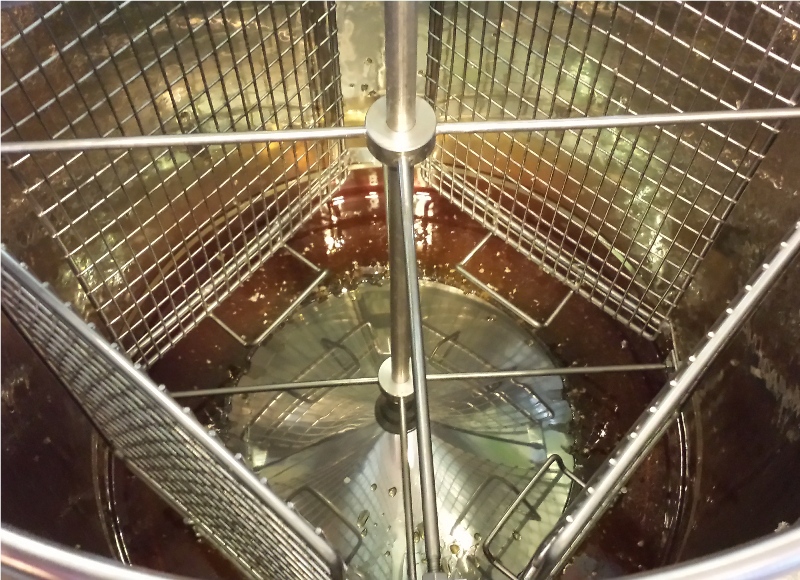 |
This photo shows the honey coming out of the extractor onto the
first filter. Immediately below is a finer filter. Once the honey
has been filtered, it is collected in the bucket below.
For those interested, the hole size for the filters for the coarse
and fine filter are 1.5 mm and 0.5 mm respectively.
The size of the filters allow the pollen to remain in the honey. |
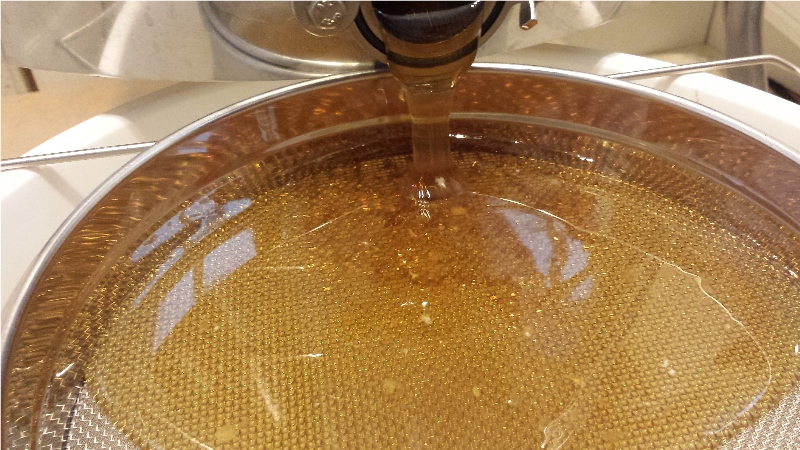 |
| This picture shows the difference in the
extracted frame (at the top) compared to the frame as taken from
the hive. |
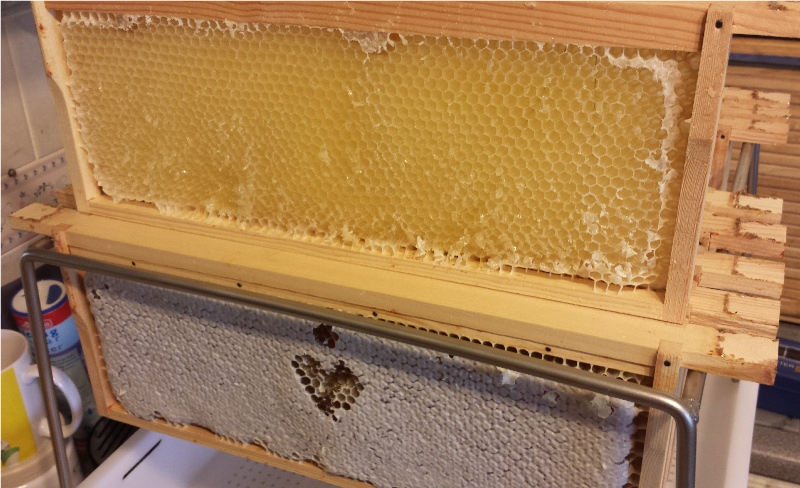 |
| A small sample is also tested to ensure
that the water content of the honey is within the limits to allow
it to be sold as 'honey'. A water content of under 20% is
required, you can see in the right hand side of the photo that the
honey has 17% water content. |
 |
|
Once filtered, the honey is allowed to settle for a few days allowing
the small air bubbles in the honey to rise to the top, without this
settling, the honey would be cloudy.
The honey can then be poured in to jars and labelled, if it last that long
before being eaten!
The picture show my jars after being filled with honey awaiting for
their labels.
I plan to take a sample of the honey and looked at the pollen
under the microscope and hopefully identify the main type of
plants that the bees have been foraging on to produce the honey.
My honey can be purchased directly by following this
link.
|
 |
Another way of 'removing' the honey is to produce 'cut comb' honey. This
is when the whole honeycomb is cut out of the frame in small blocks and
packaged complete with the beeswax. The beeswax is of course edible and
this 'cut comb' honey is considered a delicacy.






